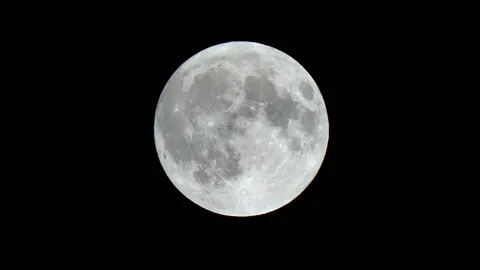The Finder TW2 is a new-generation product brought to us by Beaverlab. It’s currently crowdfunding on Indiegogo, where it has attracted more than 1000 backers. It promises remarkable value at roughly one-tenth of premium smart telescopes like the Celestron Origin Intelligent Home Observatory. However, despite its competitive pricing, a $400 investment in a stargazing tool can still feel significant for many. We have had our hands on the Finder TW2 for a couple of months and have tested it against claims in the marketing material and in line with other telescopes we have reviewed.
If you’re in the market for a smart telescope, we have shortlisted our favorites in our best smart telescopes guide. If you prefer a more traditional approach, you can be sure to find something in our best telescopes guide, or best telescopes for beginners guide.
Beaverlab Finder TW2 review
Beaverlab Finder TW2: Design
- Lightweight and portable
- Quick assembly
- Stylish carry bag
The Finder TW2 arrived in a smart carry bag with a premium finish. It was incredibly easy to set up, even without instructions. Everything feels nice to the touch and doesn’t feel cheap or plasticky, which some of the more affordable models often do.
When you buy the TW2, you get the telescope with a 500mm optical length and F/6.1 aperture, 29x optical magnification (plus a 4x digital zoom), a tripod, a remote control, a carry case (which the tripod straps to as well) and the DS1— an ‘AI-Powered Planetary Camera’.
You may like
Beaverlab Finder TW2: Specifications
Image resolution: 48 MP / 4K
Focal length: 500mm
Storage: 30 GB
Mount: Altazimuth
Battery: 6,000 mAh
Weight: 8.38 lbs/3.8 kg
As is typical with many smart telescopes, there is no eyepiece. Instead, you see the views through a 5-inch touchscreen display, which handily tilts for comfortable viewing. That said, it is difficult to see the screen when outside in sunlight (when observing the sun with the supplied solar filter).
Beaverlab Finder TW2: Performance

- Pleasing images of the moon
- Frustrating to find and lock on to targets
- Not suitable for planetary or deep sky imaging
Viewing conditions during the test were poor so we must advise taking the following with a big pinch of salt. Still, we took the Beaverlab TW2 out on several occasions, hoping to capture the cosmos in 4K.
Unfortunately, we were mostly disappointed. After the first unsuccessful outing, we contacted Beaverlab for a more in-depth instruction manual in case we missed something during setup or operation. It turned out this wasn’t the case.
Instead, the telescope/camera did not have enough light-gathering power to ‘see’ anything other than the moon (at night) or the sun (during the day) with the supplied solar filter. This is fine if that’s all you’re setting out to see, and you can still have fun doing this, but with the combination of the DS1 camera and the supplied telescope, we were not wowed with a 4K cosmos and often left looking at an entirely black screen. The one upside is that the DS1 camera can be used with any telescope that takes 1.25-inch eyepieces.
The telescope has inbuilt ‘AI,’ which refers to the picture-enhancing capabilities within the DS1 camera. It features a Color Correction Matrix (CCM), Chromatic Aberration correction, noise reduction, dehazing, and a few other features that result in better photos than if these things didn’t help to ‘correct’ them. It was pretty windy on the night the above photo of the moon was taken, but the anti-shake technology and ‘AI’ image processing resulted in a sharp and true-to-color image.
Beaverlab Finder TW2: Functionality

- Highly portable
- The DS1 image collector can be used on other telescopes with 1.25-inch eyepieces
- App connectivity
The TS2 (or rather the DS1 camera) can be paired with an app on your smartphone. With this app, you can take and view photos but we found this a bit clunky and unreliable (freezing, needing restarts, etc). There is also a remote control to trigger the camera and eliminate wobble but unfortunately, we found there was always some movement during use.
A basic finderscope is included to help manually locate objects, taking some of the frustration out of finding night sky targets. There is also a built-in compass on the tripod, but it doesn’t serve much purpose.
The supplied carry case is smart and protective, easy to take camping in the trunk of a car or trek to a remote location. Set up and take down takes just minutes, and no tools are required.
Should you buy the Beaverlab Finder TW2?
Buy it if:
✅ You want to look at and photograph the moon: This is the best use for this telescope.
✅ You want to explore the sun: Beaverlab has included a solar filter so you can take images of the sun’s surface.
Don’t buy it if:
❌ You want to see other things in the solar system: This telescope is only really suitable for viewing the sun and moon.
❌ You want assistance finding objects in the night sky: The process is completely manual, and it can be tricky to find and lock on to your chosen target without a lot of patience.
If you don’t expect too much from the Beaverlab Finder TW2 telescope, you can still enjoy imaging the sun and moon. Given that this is pretty much all you can do with it, it’s hard to recommend this telescope as one of the best for stargazing or astrophotography. You would probably get just as much enjoyment from using a pair of the best binoculars or one of the best beginner telescopes.
If you particularly like the idea of having a telescope set up in your home to view a close-up of the moon whenever you please, and the weather conditions allow you to do so, who are we to stop you?
If the Beaverlab Finder TW2 isn’t for you
If you want a telescope that will help you find objects in the night sky, check out the Vaonis Vespera II which we rated 5/5 stars in our hands-on review. We think it is perfect for both beginner and beginner astronomers — you get incredible views of the sky but for a fraction of the price of the more premium smart telescopes.
Related articles
If you have cash burning a hole in your pocket, the Celestron Origin is one of the best on the market. You can be deep sky imaging within a matter of minutes, it’s one of the easiest smart telescopes to use that we’ve tried. The app is reliable too.
If you prefer the traditional approach to stargazing, we won’t hesitate to recommend both the Celestron NexStar 8SE or the more premium Celestron Advanced VX 8 EdgeHD. The latter is intended for serious amateurs—it’s very easy to use, but some knowledge of the night sky would be advantageous.
Source: bing.com




